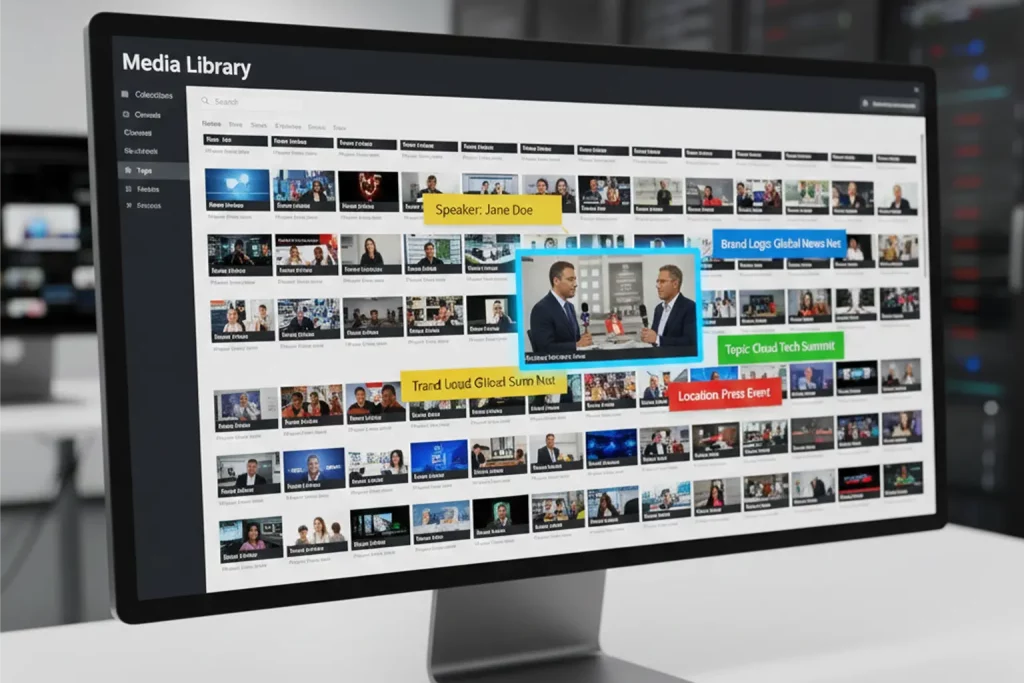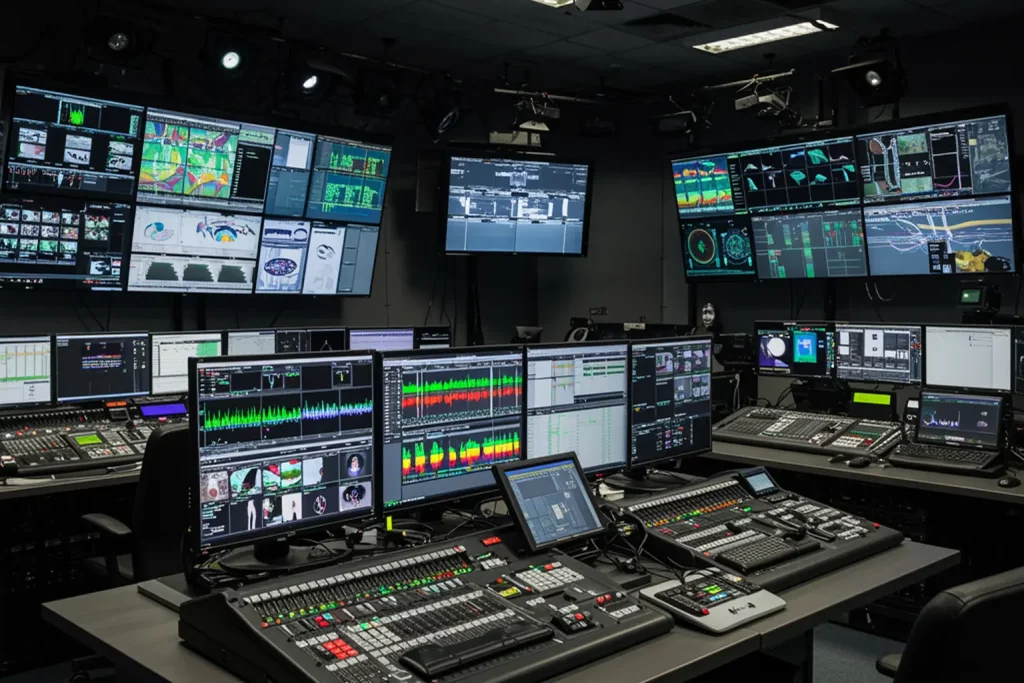AI is profoundly impacting media production and postproduction environments, transforming how content is created, edited, and delivered. Here are some specific ways AI is influencing these areas:
- Automated Editing: AI-powered editing tools can analyze raw footage and automatically assemble it into cohesive sequences. These tools use machine learning algorithms to detect key moments, remove errors, and enhance the overall quality of the content. This streamlines the editing process and saves time for editors.
- Visual Effects and CGI: AI algorithms enable advanced visual effects and computer-generated imagery (CGI). Deep learning models can generate realistic graphics, simulate physics, and create lifelike animations. This reduces the reliance on manual creation, making visual effects more accessible and cost-effective.
- Color Grading and Enhancement: AI algorithms can analyze and adjust the color grading of media content. By understanding visual patterns and style references, AI can automatically enhance colors, correct exposure, and create consistent looks across a project. This ensures a visually pleasing and cohesive final product.
- Audio Enhancement: AI-powered algorithms can improve the audio quality of media content. They can remove background noise, enhance speech clarity, and balance audio levels. This results in cleaner and more professional soundtracks without the need for extensive manual editing.
- Streamlined Workflow and Asset Management: AI helps streamline the production workflow by automating repetitive tasks and assisting with asset management. AI-powered systems can automatically tag and categorize media files, making them easier to search, retrieve, and organize. This simplifies the process of locating and reusing assets, saving time and effort.
- Content Analysis and Metadata Generation: AI algorithms can analyze media content to generate descriptive metadata automatically. They can identify objects, scenes, faces, and other visual elements within videos or images. This enables efficient content indexing, search, and retrieval, facilitating content organization and repurposing.
- Deepfake Detection and Authentication: AI is playing a crucial role in combating deepfake technology, which involves the manipulation of media content to create convincing but synthetic visual or audio elements. AI algorithms can detect and authenticate media to identify manipulated or synthetic elements, helping to ensure the integrity of media content.
- Media Distribution and Personalization: AI-powered recommendation systems can analyze user preferences, viewing history, and behavior to provide personalized content recommendations. This enhances the user experience and increases engagement. AI also aids in content distribution by analyzing audience data, optimizing delivery strategies, and identifying target audiences.
Transformative AI Tools
Several AI tools are transforming media production and postproduction. Here are some examples:
- Automated Transcription and Closed Captioning Tools: These tools use AI to automatically transcribe audio and video content and generate closed captions. Examples include Trint, Descript, and Happy Scribe.
- Video and Image Recognition Tools: These tools use AI to recognize objects, faces, and scenes in video and images. They can categorize and tag content for faster retrieval. Examples include Amazon Rekognition, Google Cloud Vision, and Microsoft Azure Computer Vision.
- Editing and Postproduction Tools: These tools use AI to automate the editing process, such as color correction, audio mixing, and visual effects. Examples include Blackmagic Design’s DaVinci Resolve, Adobe Premiere Pro, and Avid Media Composer.
- Personalization Tools: These tools use AI to analyze viewer data and personalize content delivery. Examples include Netflix’s recommendation engine, Amazon’s personalized storefronts, and Spotify’s Discover Weekly playlist.
- Content Creation Tools: These tools use AI to assist in creating content, such as generating headlines, selecting images, and even writing articles. Examples include OpenAI’s GPT-3 language model, Canva’s graphic design tool, and Artisto’s automated video creation platform.
Challenges
While AI is transforming media production, there are still challenges to overcome in today’s fast-paced and ever-evolving landscape. Here are some of the most significant challenges:
- Increasing Costs: The cost of producing high-quality media content has increased due to technological advancements and the need to create content for multiple platforms and devices.
- Time Constraints: Content is expected to be produced and delivered quickly in today’s fast-paced media environment. This puts pressure on production, which can lead to burnout and decreased quality.
- Changing Audience Preferences: With the proliferation of content, audiences have become more selective and demand high-quality, engaging content. Producers must constantly adapt and innovate to satisfy these changing preferences.
- Tight Deadlines: Postproduction schedules can be tight, and it can be hard to deliver content on time, especially when dealing with complex projects.
- Technical Complexity: Postproduction can involve complex technological processes, and ensuring that content gets delivered in the correct format and meets technical specifications can be difficult.
- Quality Control: Ensuring that content meets high-quality standards can be challenging, especially when dealing with complex projects or tight deadlines.
Overall, AI is revolutionizing media production and postproduction environments, automating processes, improving content quality, and enabling more efficient workflows. While it offers numerous benefits, AI also presents ethical considerations, such as bias, privacy, and authenticity. The industry must carefully address those issues to ensure the responsible use of AI in media production.




